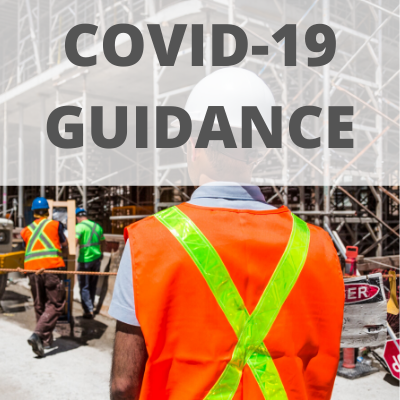

OSHA is committed to protecting the health and safety of America’s workers and workplaces during these unprecedented times. The agency will be issuing a series of industry-specific alerts designed to keep workers safe. When working in the construction industry, the following tips can help reduce the risk of exposure to the coronavirus:
- Encourage workers to stay home if they are sick.
- Allow workers to wear masks over their nose and mouth to prevent them from spreading the virus.
- Continue to use other normal control measures, including personal protective equipment (PPE), necessary to protect workers from other job hazards associated with construction activities.
- Advise workers to avoid physical contact with others and direct employees/contractors/visitors to increase personal space to at least six feet, where possible. Where work trailers are used, all workers should maintain social distancing while inside the trailers.
- Train workers how to properly put on, use/wear, and take off protective clothing and equipment.
- Encourage respiratory etiquette, including covering coughs and sneezes.
- Promote personal hygiene. If workers do not have immediate access to soap and water for handwashing, provide alcohol-based hand rubs containing at least 60% alcohol.
- Use Environmental Protection Agency-approved cleaning chemicals from List N or that have label claims against the coronavirus.
- To the extent tools or equipment must be shared, provide and instruct workers to use alcohol based wipes to clean tools before and after use. When cleaning tools and equipment, workers should consult manufacturer recommendations for proper cleaning techniques and restrictions.
- Keep in-person meetings (including toolbox talks and safety meetings) as short as possible, limit the number of workers in attendance, and use social distancing practices.
- Clean and disinfect portable jobsite toilets regularly. Hand sanitizer dispensers should be filled regularly. Frequently-touched items (i.e., door pulls and toilet seats) should be disinfected.
- Encourage workers to report any safety and health concerns.
Document Overview
Page 2 Classifying Risk of Worker Exposure to SARS-COV-2
Page 5 General Guidance for All Workers & Employers
Page 5 Interim Guidance for Workers & Employers at Lower Risk of Exposure
Page 6 Interim Guidance For Workers & Employers at Increased Risk of Exposure


